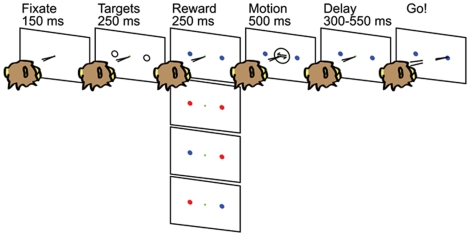Figure 1. A two-alternative, forced-choice, motion discrimination task with multiple reward contingencies; sequence of events comprising a typical trial.
From left to right, trials begin with the onset of a fixation point. Two saccade targets appear and then change color indicating the magnitude of the reward available for correctly choosing that target. A blue target indicates a low magnitude (L) reward, while a red target indicates a high magnitude (H) reward. The four reward conditions are depicted vertically—LL,HH, LH and HL, from top to bottom. The visual motion stimulus is centered on the fixation point. Following offset of the motion stimulus, the monkey maintains fixation during a variable delay period after which the fixation point disappears, cueing the monkey to report his decision with a saccade to the target corresponding to the perceived direction of motion. If the monkey chooses the correct direction of motion, he receives the reward indicated by the color of the chosen target.

